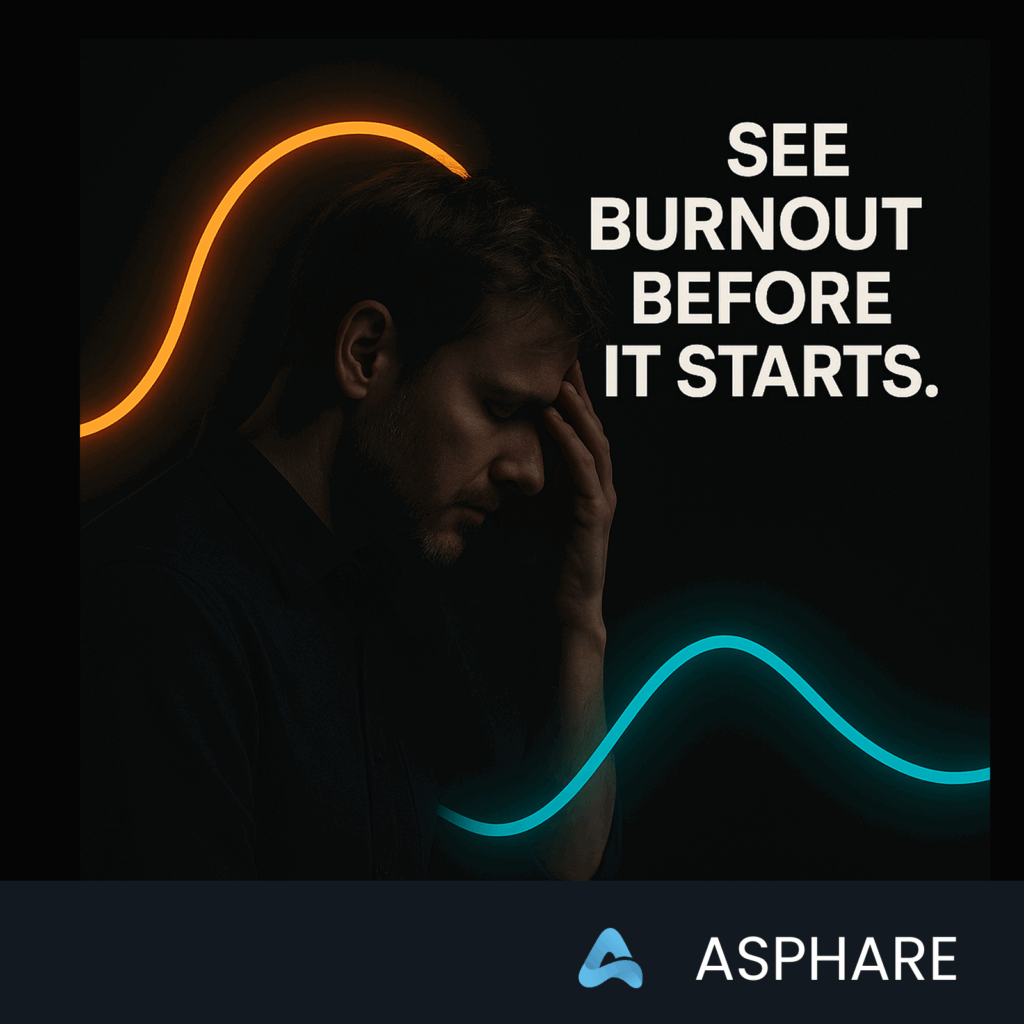I recently spoke with an HR Director who said,
“We only found out she was close to burnout when she stopped replying to messages — and her projects were already delayed.”
That silence wasn’t laziness. It was a signal — one hidden in workload imbalance, longer response times, and declining participation.
The data was there. Just not seen as a warning.
Traditional dashboards report what already went wrong.
They don’t reveal what’s about to go wrong.
That’s where predictive workforce intelligence changes the story.
ASPHARE continuously evaluates Engagement, Vitality, Fulfillment, and Performance — its four AI Core Scores — to forecast risks before symptoms surface.
When Vitality drops but Performance stays high, ASPHARE’s AI Risk Alerts flag a rising burnout trajectory.
AI Suggestions then guide leaders on where to check — workload distribution, collaboration density, or recovery patterns — before it’s too late.
And AI Growth Nudges support sustainable recovery, not reactive firefighting.
It’s not about tracking people.
It’s about understanding patterns that protect them — and the organization’s health.
The real question isn’t who burned out.
It’s: how early could you have seen it coming?
